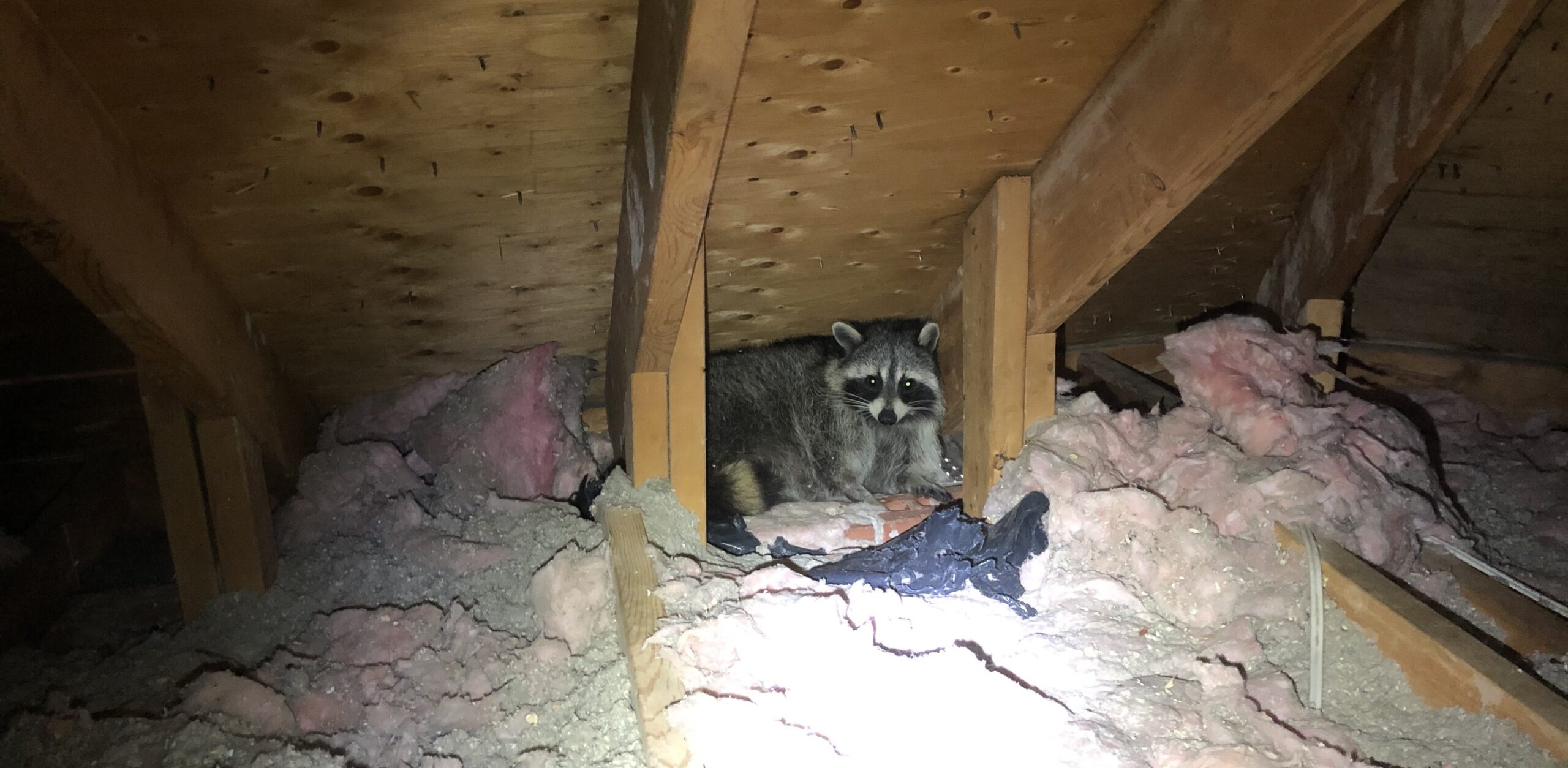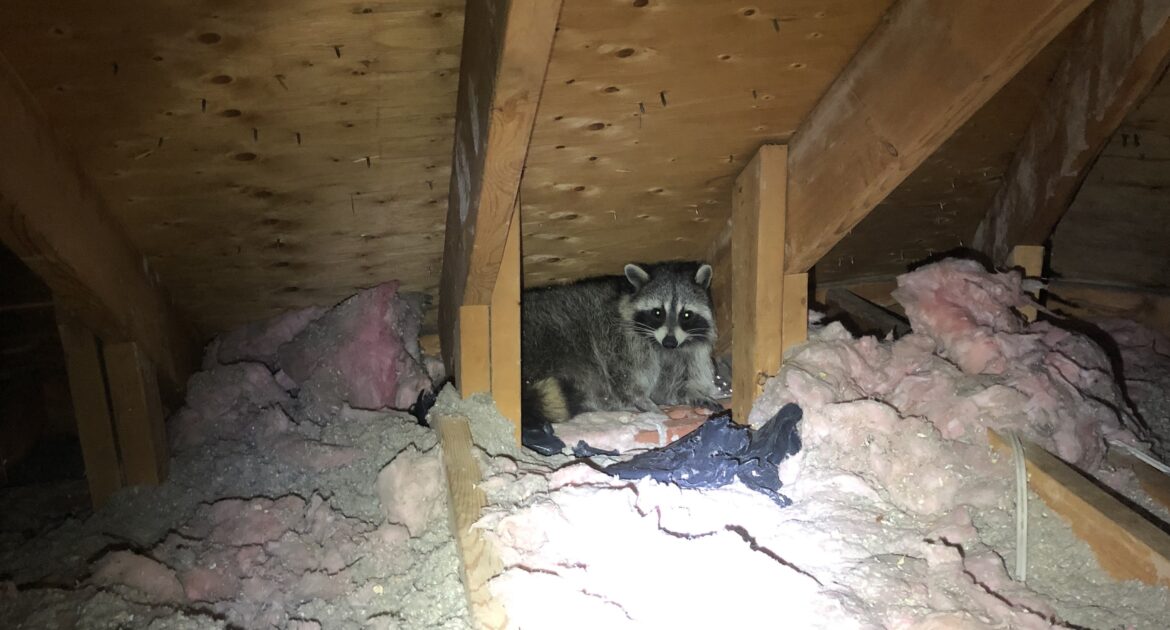Raccoons are incredibly intelligent and resourceful creatures, always on the hunt for a safe and sheltered space, especially when the temperatures drop or when raising their young. Believe it or not, they’re skilled enough to sneak into places you’d never expect. While most homeowners focus on obvious entry points like open doors or windows, raccoons are experts at finding the less noticeable weak spots in a house—areas you might overlook until it’s too late.
Their climbing and problem-solving skills give them an advantage, allowing them to turn unlikely parts of your home into their personal entryways. From chimneys to hidden roof corners, raccoons know how to find opportunities for shelter. Understanding what attracts raccoons, where raccoons live, and how to get rid of raccoons in your house starts with identifying these hidden access points.
This raccoon roundup focuses on five surprising entry points in your home that you’ll want to secure to keep these furry invaders out. By addressing these areas, you can prevent the damage, mess, and health risks that come with having raccoons inside. And if you’re located in Atlanta, Skedaddle Humane Wildlife Control is here to provide expert, humane solutions to keep your home safe and wildlife-free. Read on for actionable tips to protect your home.
Chimneys Without Proper Caps
A chimney can feel like an unusual hiding spot to us, but it’s practically perfect for raccoons. Without a proper cap, a chimney resembles a hollow tree trunk, making it an enticing shelter. These animals climb easily, scaling brick or stonework as effortlessly as climbing a tree.
Once inside, they’re not always able to climb back out, leaving them trapped and stressed. Not only can they cause physical damage as they claw their way through, but their presence can also result in unpleasant smells or even dangerous blockages in your chimney.
To protect this part of your home, invest in a high-quality chimney cap. Regular chimney inspections ensure everything stays in good condition, especially after storms when caps can loosen or shift.
Chimneys are a prime example of how small, often overlooked vulnerabilities can lead to big surprises. Taking preventative steps like adding a cap saves both you and the raccoons from unnecessary stress.
Roof Vents and Attic Fans
Your roof likely has vents and attic fans designed to regulate air circulation. But what’s good for ventilation can also become an unintended entryway if you’re not careful. Raccoons can sense the warmth and safety attics provide, making vents a tempting access point. Unfortunately, the weak materials used in some vent covers are no match for a determined intruder with sharp claws.
Once inside the attic, raccoons build cozy nests, chew on wires, and damage insulation. Over time, this can lead to more expensive repairs—not to mention the frustration of dealing with noises coming from above your ceiling.
Replacing flimsy materials with durable, wildlife-proof vent covers is the best defense. Choose covers made from strong metal or heavy-duty mesh and check them periodically to ensure they remain intact.
Loose or Damaged Soffits and Fascia Boards
The edges of your roof might not seem like a top priority during routine maintenance, but these areas can become prime entry points if left unchecked. Raccoons often take advantage of loose or rotting soffits and fascia boards to gain entry into roofs or walls.
Think about it—these spots are close to the roofline and out of sight, making them easy to miss during inspections. Over time, weather, age, and even pests weaken these structures, creating gaps that animals can pry open.
Ignoring a small crack or sagging board often leads to bigger problems down the road. By keeping an eye out for damage and repairing compromised boards quickly, you can avoid giving raccoons a way into your house. Reinforcing these areas with stronger materials or seals also goes a long way in keeping your property secure.
Gaps Around Roofline Corners
Even if the rest of your house seems secure, those hard-to-spot gaps where the roof and walls meet can be trouble. These tight spaces may not seem like a problem, but you’d be surprised by how small an opening a raccoon can take advantage of.
- Even gaps just a few inches wide are enough for some creatures to squeeze through.
- If the gap already has damage, like splintered wood or loose shingles, it becomes even easier for them to exploit.
- Once inside the walls or attic, a home is theirs to explore, potentially leading to infestations or structural damage.
Seal these gaps with durable materials like caulk or hardware cloth. It’s also a great idea to hire professionals to identify any areas you may have missed. These gaps aren’t always visible from the ground, so thorough inspections are essential.
Inspections are crucial for protecting your home. Set aside time to inspect your property, ideally at the beginning of each season. Pay special attention to roofing and any areas where wood meets other materials, as these are high-risk zones. Even if you don’t notice damage now, spotting wear and tear early can prevent major problems later.
Garage Door Seals
At ground level, garage doors may seem secure, but worn seals or older doors often leave tiny gaps along the edges. It doesn’t take much space for a determined raccoon to scoot under and find its way into your garage. Once inside, it’s like a treasure hunt—the garage might connect to other parts of your home or offer a quiet place to nest among boxes and tools.
The best way to avoid this is by inspecting your garage door’s weatherstripping regularly and replacing it when it shows signs of wear. Keeping the garage door closed whenever possible also reduces the risk of inviting trouble.
When updating your seals, invest in durable, tight-fitting materials that animals won’t easily chew through. Combine this with keeping the area clean and minimizing clutter that could create hiding spots.
Small Changes Make a Big Difference
Each of these entry points shows how even minor issues can quickly become bigger concerns. What makes these areas so tricky is that they’re often not obvious at first glance. That’s why it’s so important to take the time to identify and secure these weak spots when protecting your home.
Wild raccoons are often drawn to homes in search of food, shelter, and safety. Attics and garages mimic the safe spaces they’d seek out in nature for nesting or raising their young. Crumbs in garbage cans, pet food left out, or an inviting gap at the edge of your roof only further lure them in. By reducing these attractants, you give yourself an advantage in preventing an issue before it starts.
Protect Your Home and Peace of Mind With Skedaddle
We’ve covered five surprising entry points that can turn your home into a safe haven for raccoons—chimneys, roof vents, soffits, roofline corners, and garage doors. These under-the-radar areas might not seem worrisome at first, but when raccoons take advantage, the impacts can be costly and even risky for your family’s health.
If you’ve noticed damage around your home or signs of an infestation, it’s time to take action. Skedaddle Humane Wildlife Control in Atlanta offers expert services that keep your home secure while ensuring no harm comes to the animals involved. Our techniques focus on humane prevention and effective repairs—leaving you worry-free and wildlife-free.
Wondering how to get rid of raccoons in your house? Call us today to schedule your inspection. We’ll pinpoint problem areas, reinforce your home, and give these creatures a chance to move on safely. Don’t wait—your peace of mind and your home’s safety are worth every step.




